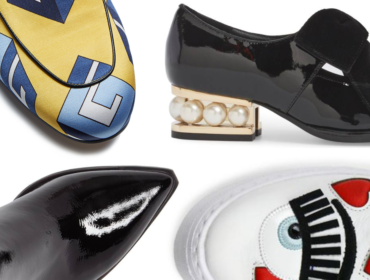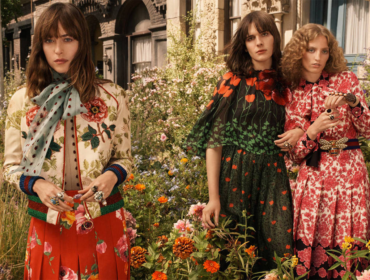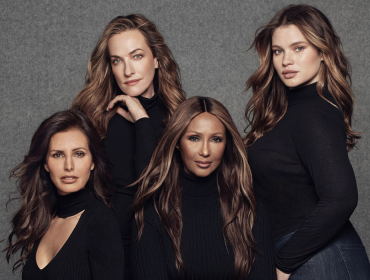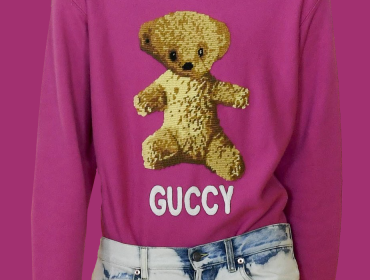[slideshow exclude=”7,8,10″]
San Francisco — Wildlife Works is a an organic apparel company that was founded to help with wildlife conservation and support communities in third world countries. They have created more than 400 jobs at their project area in South East Kenya, making Wildlife Works the largest job provider in the area. I recently caught up with creative director Joyce Hu to discuss the line and the impact their company is having on wildlife conservation.

The Chic Spy: What inspired the launch of Wildlife Works apparel collection?
Joyce Hu: Mike Korchinsky founded Wildlife Works in 1997 to create market-based solutions for wildlife conservation. Fashion apparel production is a trainable skill for rural communities so he thought eco-fashion would be a great product to market in developed countries to create sustainable jobs in rural areas of developing countries.
TCS: Are all the fabrics 100% organic cotton?
JH: Yes. It comes from a coalition of organic farmers in India called Chetna.

TCS: Who designs the apparel collection?
JH: I do, along with one other lead design and production manager. I contract other graphic and print designers from time to time.
TCS: Who creates the organic illustrations on some of the tees and do they have a specific significance?
JH: The KuKhanga collection is inspired by the vibrant East African Khangas worn by the women there. The graphics on the tees are extracted elements from some of my favorite patterns I found on my inspiration trip to Kenya. I go twice a year to our project site for production so I travel around Kenya and Africa for inspiration.
TCS: What sets Wildlife Works apart from other sustainable companies?
JH: We are long-term invested in the communities we work in. We built our own eco-factory and train the local employees ourselves. We develop the skills of the local community so they are self-sustaining in their growth and aren't reliant on outside donations. Many of our employees have been with us and growing with us since the beginning. Because we have control over the entire production chain, we can be completely transparent with how we do our socially and environmentally conscious production. Most sustainable brands can't be as transparent because they don't exactly know what's going on in the "ethical" factories they contract, or their fair trade production sources aren't around long enough because of poor funding.
TCS: How is Wildlife Works making a difference in the Kenyan community?
JH: Not only do we create jobs, we have built schools, support and have started many community and education programs. For example, we support the Imani Women's Group, which helps women in the area to access health care, education and general community care.

TCS: What is your company doing to help wildlife conservation?
JH: The conservation and apparel jobs we create and the community development we provide are economic substitutes for poaching and harmful harvesting. When the basic sustenance requirements are met with long term jobs, the needs of the community can be balanced with the needs of the surrounding wildlife. Both can then thrive in harmony.
TCS: What do you think are most people's misconceptions about wildlife and how is your company trying to dispel those myths?
JH: I think most people are just disconnected from wildlife in general because we live in urban or suburban environments. Wildlife (and animals in general) are direct meters to the health of our planet and how responsibly we are acting towards it. We are trying to bring awareness around how our consumption affects wildlife in other parts of the world.
TCS: How can fashion help wildlife?
JH: The fashion community can help wildlife by being environmentally and socially responsible in their production, distribution and operations. We must challenge all of our production vendors to do the same and move towards as much transparency as possible. Consumers can start demanding more transparency as well: Where do your clothes come from? Who makes them? How and where are they made and under what conditions? Who are the people behind the machines and cutting tables?
TCS: Describe Wildlife Works in three words.
JH: Consumer powered conservation.
TCS: If Wildlife Works had a covert or "Chic Spy" moniker, what would it be?
JH: Wildlife workin' it!
Joyce Hu offers five tips on how you can help wildlife conservation through your style choices:
- Buy Wildlife Works! We have basic cotton tees as well as more fashion-forward pieces. Start by replacing all of your basics with organic and sustainable versions.
- Offset your carbon footprint. Protecting forests protects wildlife.
- Replace your every day household and bath products with sustainable, ethical, cruelty-free brands. They are quite easy to find these days at Whole Foods or online.
- When not buying from a sustainable brand, try to buy recycled as much as possible. I love vintage!
- Travel with an eco-tourist mind. Go outside the major cities and visit forests with abundant wildlife. Get closer to those magnificent wild beings.
For more information on how Wildlife Works has transformed the community in Kasigau, Kenya, visit Kasigau Community. To learn how you can leave a lighter carbon footprint, visit Shop Carbon.
Chicly Yours,
The Chic Spy




